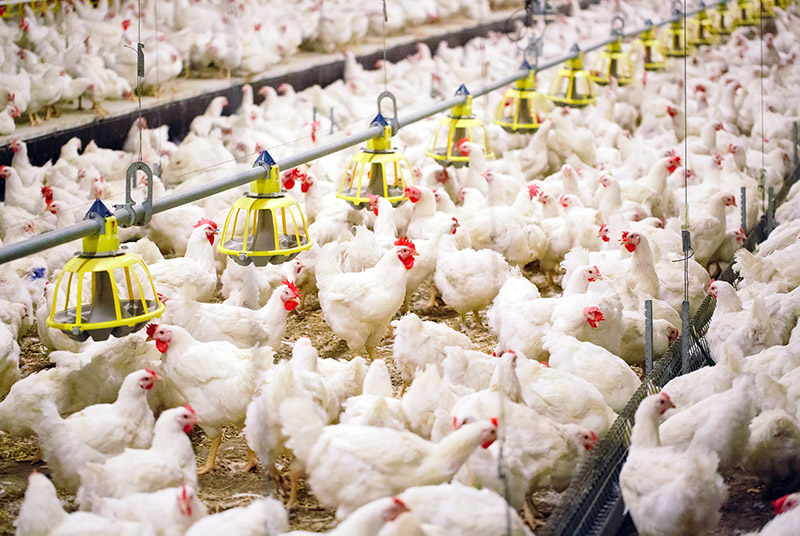Section 1 | An Overview of Necrotic Enteritis
Industry
Page 03 /
Necrotic Enteritis: What is it and where does it come from?
Necrotic enteritis (NE), meaning inflamed and dying intestines — is an infectious disease of poultry that has affected the industry for decades.

Source: Merck Vet Manual
Although there are a variety of factors that contribute to the disease in a flock, the bacteria credited with causing the infection is Clostridium perfringens. C. perfringens is everywhere — it lives in the intestines of birds, soil, and the barn environment1. It can survive for long periods as a dormant organism just waiting to infect birds and cause disease. One thing that makes it particularly good at causing disease is that it is one of the fastest-growing bacteria1. It has been causing disease and economic loss in the poultry industry for decades, coinciding with the intensification of production2.
Antimicrobial growth promoters (AGPs) and anticoccidial drugs have been instrumental in preventing NE and other diseases; however, these practices are being phased out given the concern surrounding the development and spread of antimicrobial resistance associated with the overuse of antimicrobial medications in food-producing animals3. The poultry industries are working towards more prudent use, increasing veterinary oversight, and eliminating the use of some antimicrobials, particularly those of importance to treating infections in humans.
Without antimicrobials, NE has become a re-emerging issue in poultry production — causing sickness, death, and loss in productivity in flocks worldwide. The industry must find alternative strategies to antimicrobial use to optimize gut health and prevent NE.
Check out our page on antimicrobial resistance and appropriate antimicrobial use.
NE Impact in Canada: In the current age of reduced antimicrobial use and “raised without antibiotics” (RWA) flocks, NE is becoming a major problem. Recent research by Dr. Martine Boulianne, poultry research chair with the University of Montreal’s Faculty of Veterinary Medicine quantified the impact of NE on RWA farms4. Her team found that about 25% of RWA flocks experienced a NE outbreak, 50% were affected by milder forms of NE, and only 25% were classified as “healthy”. NE is having a profound impact on the health, welfare, and productivity of our flocks.

References
- Prescott JF, Parreira VR, Mehdizadeh Gohari I, Lepp D, Gong J. The pathogenesis of necrotic enteritis in chickens: what we know and what we need to know: a review. Avian Pathol. 2016;45(3):288–94.
- Kaldhusdal M, Benestad SL, Løvland A. Epidemiologic aspects of necrotic enteritis in broiler chickens – disease occurrence and production performance. Avian Pathol. 2016;45(3):271–4.
- Gaucher M Lou, Perron GG, Arsenault J, Letellier A, Boulianne M, Quessy S. Recurring necrotic enteritis outbreaks in commercial broiler chicken flocks strongly influence toxin gene carriage and species richness in the resident Clostridium perfringens population. Front Microbiol. 2017;8(MAY):1–11.
- A novel necrotic enteritis vaccine strategy. In Canadian Poultry Magazine, May 2017, p 16. https://cdn.coverstand.com/1191/398585/004a677b380b6f5339750533b093b0e152136078.3.pdf; accessed November 14, 2019.